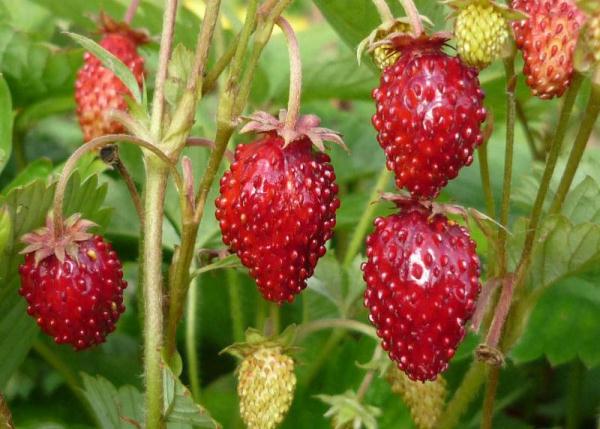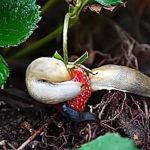Strawberries are the most ancient berries, archaeologists find their traces in sediments of more than 60 million years old. But it became a garden crop only in the 15th century, before that people were content with a generous forest harvest. BUT modern breeders have made the dream of our ancestors a reality - they brought out remontant varieties of strawberries, the fruiting of which lasts from the beginning of summer until late autumn, thanks to which they have an impressive yield. The repair strawberry is incredibly popular among gardeners, but if you decide to dissolve this berry in your plot, you need to prepare for the need to meticulously care for it, because the plant requires a lot of attention. Let's take a closer look at the rules of planting and care for remontant strawberries.
Table of contents
Advantages and disadvantages of remontant strawberries
The strawberry remontant varieties differ from their forest relative, primarily, by an increased fruiting season.. That is, as soon as one fruiting cycle is completed, it is immediately replaced by the next one. Thanks to the efforts of breeders, wild strawberries have acquired many useful properties that facilitate the process of its cultivation, but at the same time they managed to leave unchanged the taste and aroma inherent in wild berries.
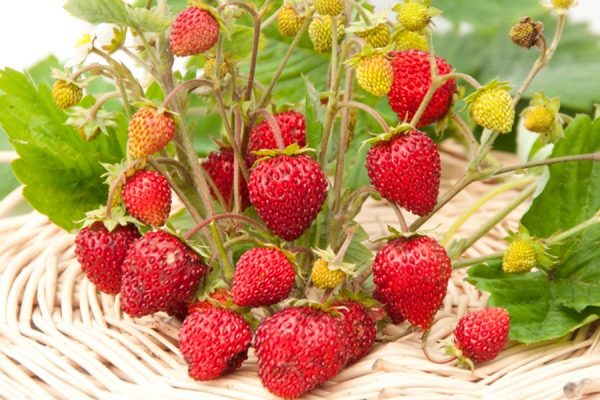
Among the advantages of the remontant strawberry are:
- High yields. Modern varieties begin to bear fruit 2 weeks earlier than the classical ones, and thanks to frost resistance, they give harvest until late autumn.
- Cold resistance. Even in case of damage due to frost inflorescences, new ones will quickly grow instead.
- Large fruit sizecompared to wild berry.
- Taste and color variety. There are varieties with berries of yellow or white.
- Disease resistance and insect pests.
But they have such varieties and their disadvantages, which are associated with the difficulties of caring for them:
- A big harvest berries will give only the first few years, then she will start to dwindle. To the plant is constantly actively bearing fruit, he every transplant required 2-3 years.
- Remontant varieties are more demanding on moisture, nutrition and lighting. In the absence of the necessary conditions, the fruits are ground and yields will decrease.
- Such a strawberry grown only seedlings.
Thus, remontant varieties of strawberries bring a lot of trouble to gardeners, but they are more than paying off the worth of plants. Growing berries has specific features, so before you start planting it in your garden, it is necessary to gain knowledge of planting and proper care of these varieties of strawberries.
Outdoor Planting Rules
Sowing remontant strawberries begin early - at the end of February, or in the first week of March. It is carried out as follows:
- Pour into seedling container loose ground and water it.
- Spread the seeds evenly over the surface and lightly press your fingers into the ground. It is not necessary to fall asleep with earth.
- Cover the container with glass to create a greenhouse effect and put on the windowsill.
- Moisten the ground periodically from a spray bottle and lift the glass for airing.

Strawberry seeds peck long enough - from 20 before 30 days. When the sprouts hatch, and there will be 3 leaves on them, the seedlings need to dive.
Strawberries can be planted in the open ground as soon as the night frosts stop.
The most optimal way of planting is considered a two-line bush. It will relieve from thickening and protect the plant from fungal infections.. With this method, between two lines in the tape leave a distance of 30 cm, and between the tapes themselves 70 cm. In rows, the bushes are seated at a distance of 25-30 cm from each other.
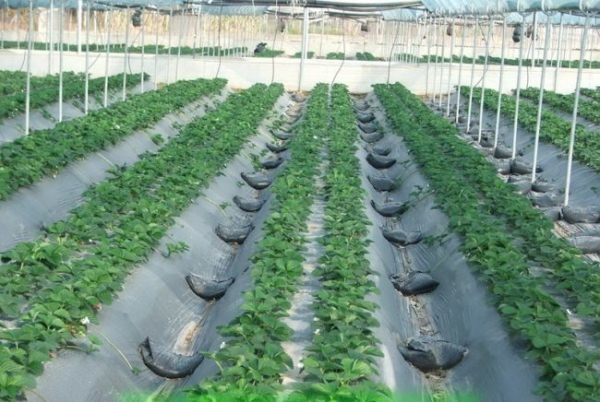
It is popular with gardeners and the combined method of planting when alternating strawberries with other crops. Most often, in the role of its neighbor serves garlic, which protects strawberries from the invasion of slugs.
The technology of direct planting of bushes in the ground includes the following stages:
- Loosen the soil on the bed and form in it the wells of 25 cm in width, length and depth.
- Carefully water the wells water
- Add fertilizer to the soil. On a bucket of earth, take a bucket of compost mixed with biohumus in the amount of 2 liters. You can also add there 2 glasses of ash.
- Plant seedlings. Straighten the roots, they are buried vertically. In this case, the apical bud is located strictly above the surface.
- Water the planted bushes water
- Grouch the ground in a thin layer.. To do this, use dried grass, pine needles, compost, but not straw, it is too hard for young plants.
Everything, most of the work is done. Now it remains only with the help of proper care to create strawberries conditions for active fruiting.
Features of the cultivation and care of strawberry remontant varieties
Caring for a plant includes the following components:
- watering and feeding;
- weeding;
- mulching;
- protection from diseases and insects;
- seating too thick plantings.
Watering is especially important at the stage of development of bushes, so in the absence of rain, strawberries need regular watering throughout the summer.
Due to prolonged fruiting, remontant strawberries need more feeding than other varieties. Before the appearance of green berries, bushes feed infusion slurry (1:8). Ash is also added there - 250 g per 10 l.To feed a 5-meter row will need 10 liters of fertilizer.
The next time you can feed the plants when they begin to bloom en masse. Processing with boron, manganese, and zinc (per 10 liters of water, 2 g of each substance) will improve stiffness and contribute to an increase in the mass of fruits. Spraying is carried out only in the evening.
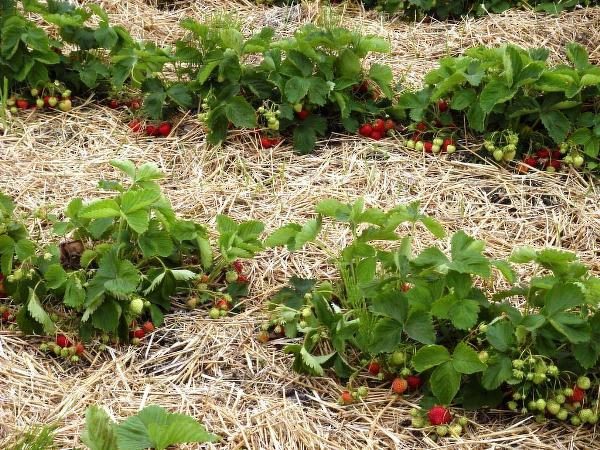
Significantly help simplify the care of strawberry mulching. For adult plants for this purpose, use straw or rotted sawdust.
Using mulch gives a lot of advantages:
- retains moisture in the ground, which reduces the number of irrigations;
- provides air access to the roots of the plant, due to which there is no need for constant loosening of the earth;
- holding back weed growth;
- protects berries from decay.
For plant prophylaxis sprayed with Bordeaux mixture or infusion of garlic. It is also necessary to regularly clean the bushes from the old foliage.
Of the pests on strawberries are usually found slugs and snails. From them, the plant should be sprinkled with a mixture of tobacco dust and ash (1: 1), or spread dry superphosphate around the bed.
- Grape snail
- Slugs harm the berries of the remontant strawberry
All these activities provide the basic care that any plant needs. But the strawberry remontant has its own specific requirements.
Pruning bushes in the fall and preparing the plant for winter
In the autumn, after the end of the fruiting period, pruning of strawberries is carried out. Foliage, antennae and rosettes rob the plant of the forces that it needs to accumulate to the next flowering. Therefore, if you want to get a good harvest next year, this procedure is necessary.
It is necessary to cut the leaves immediately after the last harvest, so that by winter the bushes have time to acquire fresh leaveswhich will act as a natural heat insulator. If you miss the moment, and the new leaves do not have time to grow before the onset of cold weather, it is better to leave the old foliage and pruning to cancel.
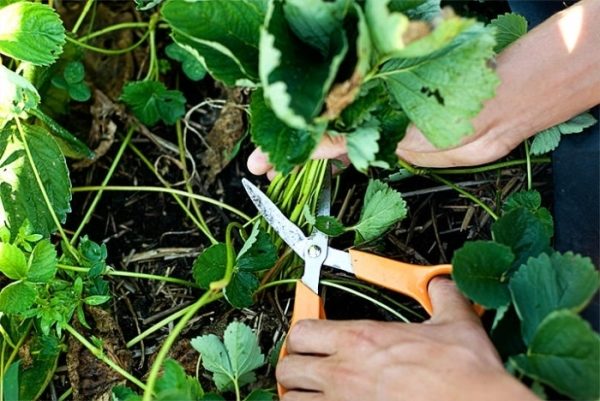
Leaves and whiskers are cut at the very base, so that malicious insects are not present in their remains. Send the cut parts of the plant to the compost pit, just inspect them carefully for pests or diseases, perhaps they should be burned.
After pruning plantings need to be treated with preventive measures with insecticides. And in order for the new foliage to grow by winter, the plants need to be watered regularly. You can even feed the roots of organic fertilizers.
In the central and northern regions, the beds are insulated for the winter using a layer of manure or fallen leaves with a thickness of at least 5 cm. But the best protection against the cold for strawberries is snow. To make its layer thicker, apply between the rows of branches from the trees. They hold the snow well and form high drifts.
These are the main points concerning the breeding of remontant strawberries. After studying them, it remains only to choose for themselves specific varieties, which, at the moment, are very much developed.
The best varieties of remontant strawberries
Arapaho
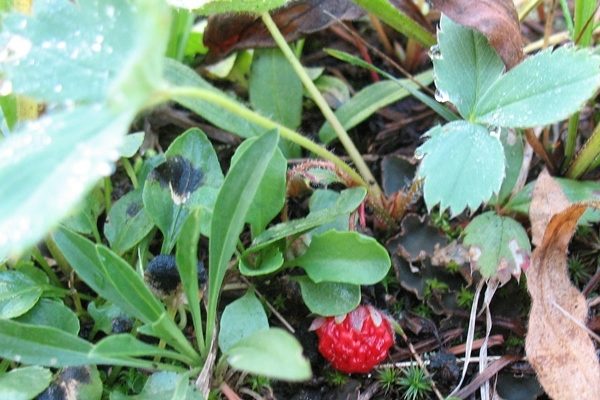
American variety. The first harvest is the end of June - the middle of July, and the second flowering period begins in the second half of July. The second time fruits until the end of September. High-yielding variety - from one bush is harvested to 300 g berries. The size of the fruit is medium (10 g), the shape is round, the color is bright red. The berries have a sweet and sour taste and tender juicy flesh, the smell is weak. This variety has a small amount of whiskers and high resistance to cold.
Borderella

Strawberries come from France. The first time blooms in late May, the second - in late July. Fruits until the start of frost. Good yield (300 g from the bush). Fruits are medium sized, shiny, bright red in color. A mustache is formed a little.
Repairing Crimean
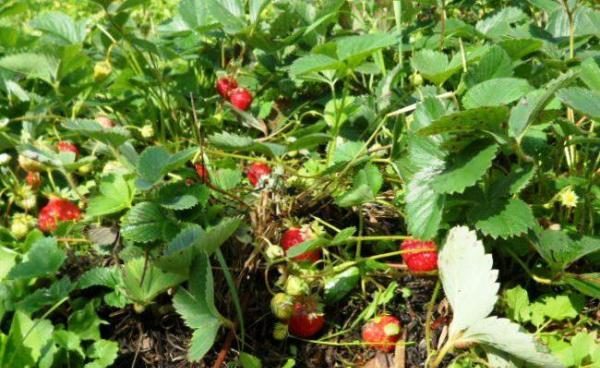
Variety bred in Simferopol. It has average yields, but very large berries. In the first harvest, it reaches 40 g. Fruits are round, of dark saturated color, with juicy and sweet pulp.. The variety is resistant to gray mold disease.
Temptation
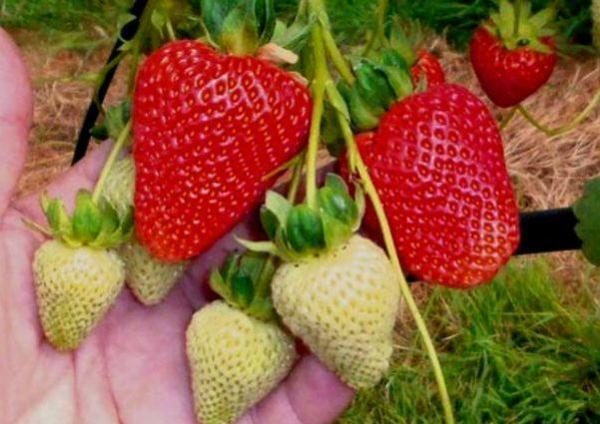
This variety has a large size of the fruit. Their average weight is 15-20 gbut it comes to 35 g. Fruiting lasts from the end of May until the first frost. The berries are incredibly sweet, with a dense texture and bright aroma.It has a high decorative effect due to elongated peduncles, suitable for growing in pots on window sills or warmed balconies.
Rapella
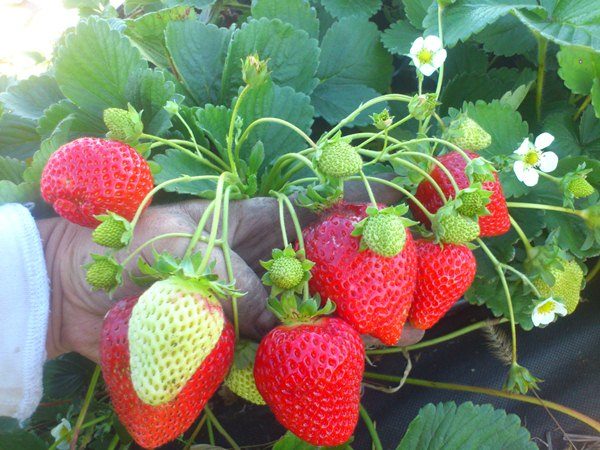
The most popular variety in Europe. Bred by Dutch breeders. In the first harvest berries reach a mass of 20 g. Pulp dessert dessert, dark red. The main advantage of the variety is resistance to late blight.
Diva F1
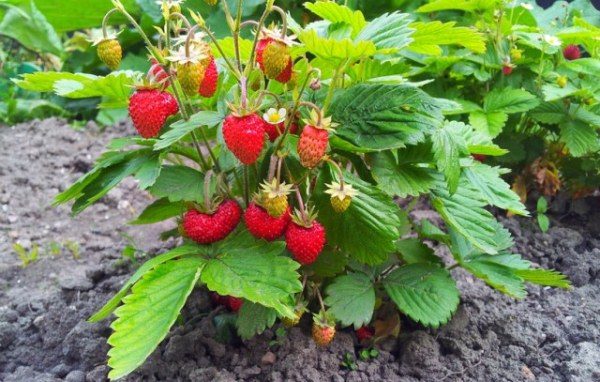
It has powerful bushes with highly located peduncles, which simplifies harvesting. The berries are very beautiful - large, regular shape, noble scarlet. They have an excellent sugary taste and high transportability. Winter-hardy.
Superfecshen
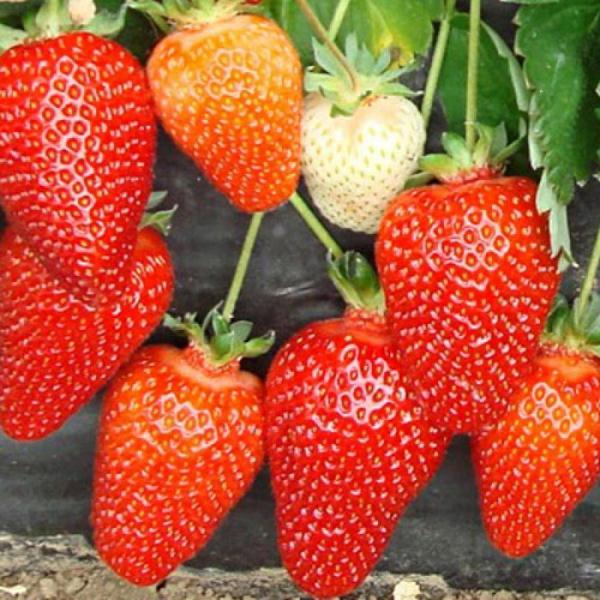
Another variety of American origin. Its main advantage is resistance to powdery mildew and spotting. It has a fairly large size of berries - up to 25g. The shape of the fruit is tapered, have a sweet and sour taste. Frost resistance is high.
Evi 2
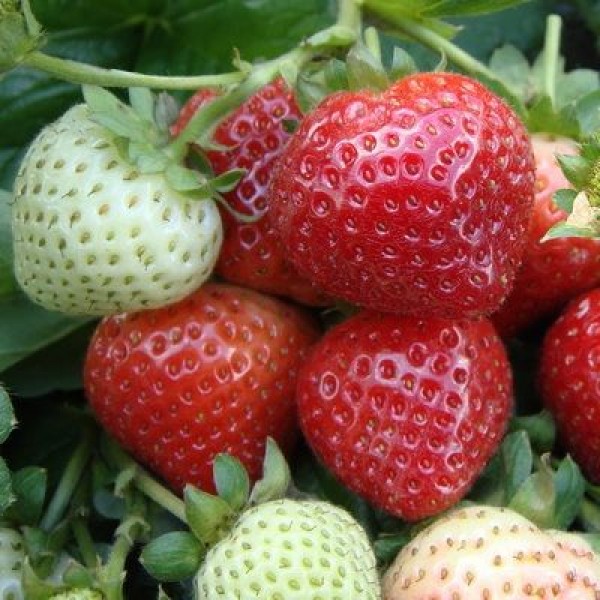
One of the favorite varieties of gardeners. Incredibly high-yielding - with 10 sq.m. collected before 55 kg berries. Fruits are large, spherical in shape, of all remontant varieties considered the most delicious and juicy.
Whichever of the existing remontant varieties you choose, with proper agrotechnology, the plant will provide you with tasty berries throughout almost the entire summer and autumn. Besides, similar varieties are very similar in taste with wild berries, therefore, with a little effort, you will arrange on your site a real forest glade.
